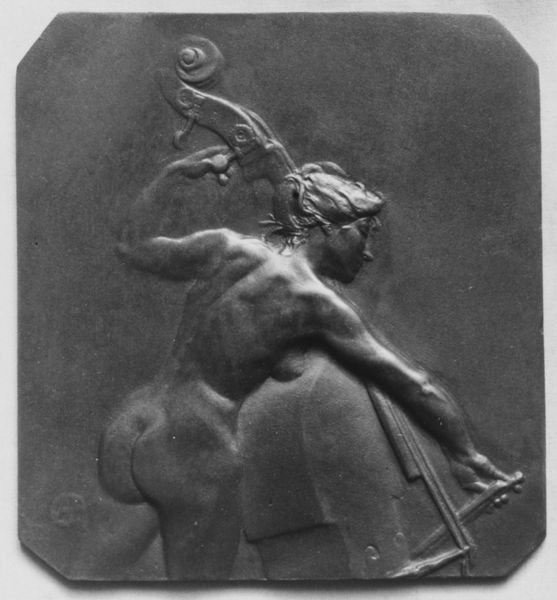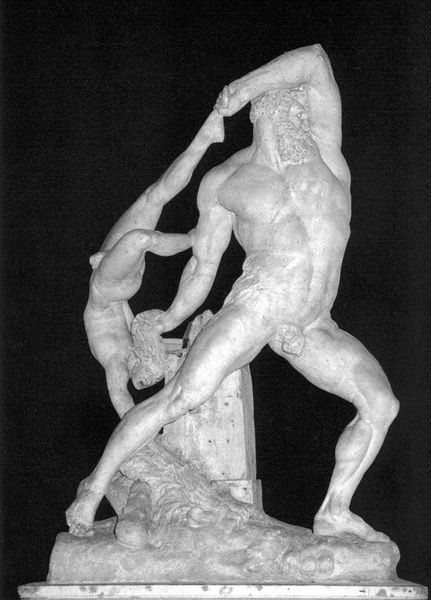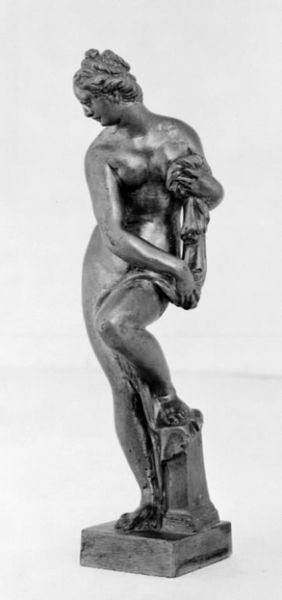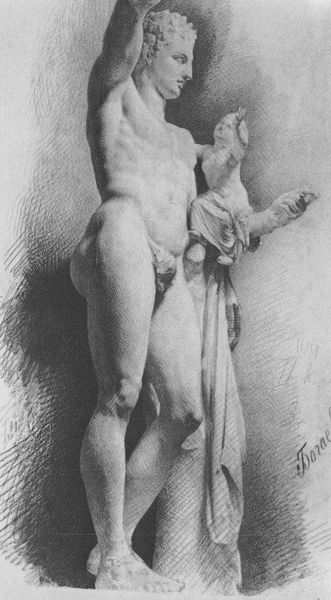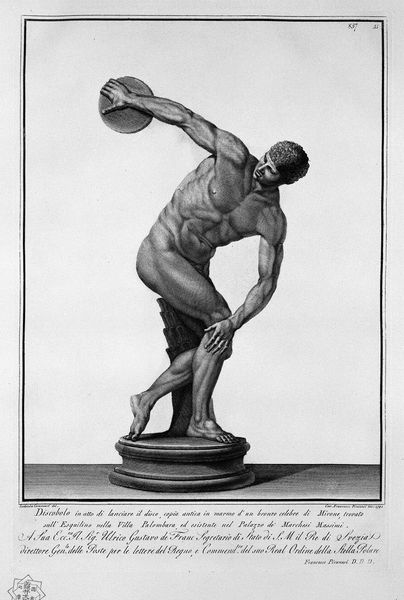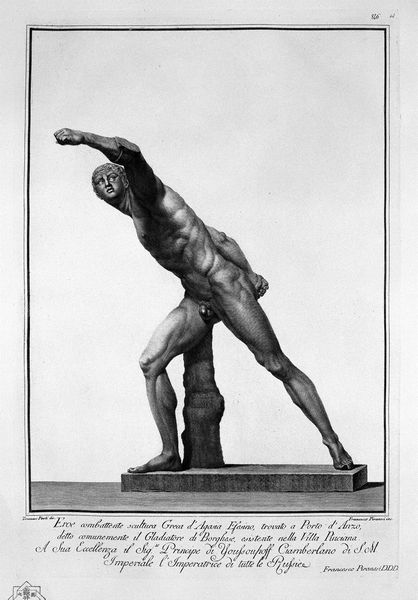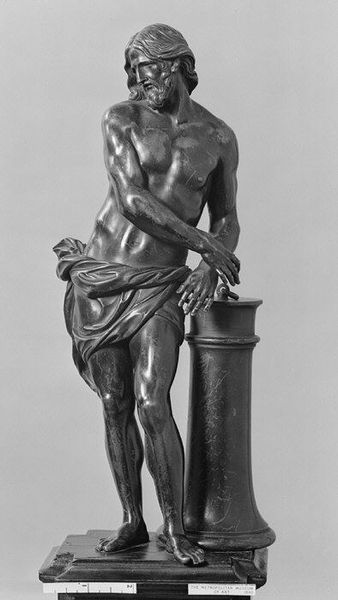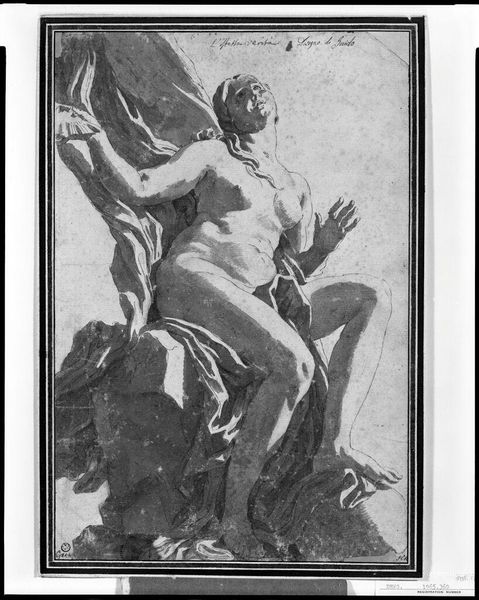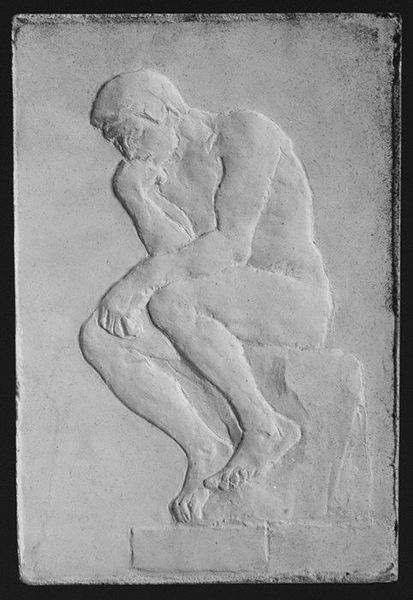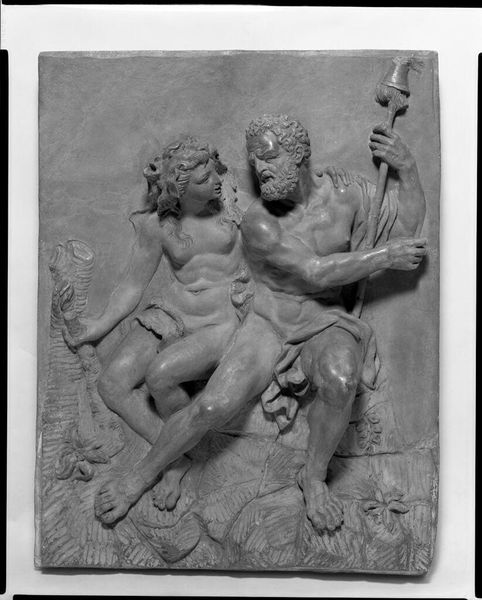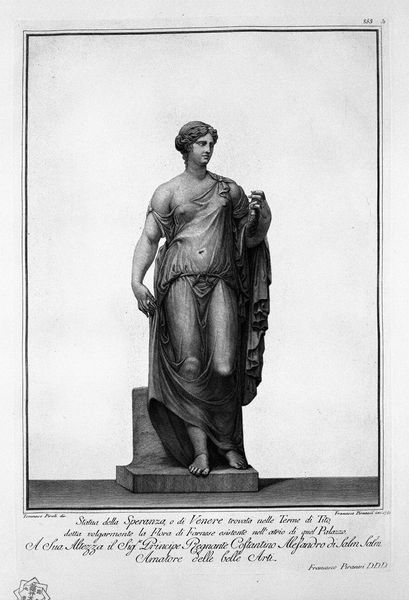
La Danse (one of a pair) 1802 - 1902
0:00
0:00
Dimensions: 5 3/8 × 3 7/8 in. (13.7 × 9.8 cm)
Copyright: Public Domain
Curator: Before us we have "La Danse," a bronze relief by Alexandre-Louis-Marie Charpentier, likely created sometime between 1802 and 1902, currently residing here at the Metropolitan Museum. Editor: The movement just leaps out at me. There's a dramatic energy captured in this bronze; it feels classical yet dynamic. Curator: Absolutely. The bronze medium itself is interesting; bronze as a material became easily consumed because of industrial development but retains the impression of classical sculpture through its colour, process of making, and ability to retain texture. What does this say about societal accessibility to art at the time, and whose body does it celebrate? Editor: Those fluid lines immediately recall the Art Nouveau aesthetic. It's hard to ignore the nymph-like figure, almost weightless, caught in a perpetual dance. Notice how the drapery swirls around her, both revealing and concealing. It creates a fascinating tension. We could trace that imagery back through countless cultural depictions. Curator: True, the figure and cloth serve the form, drawing the eye around in an unbroken motion and the monochrome enhances our perception of the fine detail. Consider the economics that drive art to focus on nude and supposedly idealized women? Who has the ability to consume images like this and what expectations are put on women? Editor: The pose itself, while graceful, also feels somewhat vulnerable. Is it a dance of joy, or is there perhaps a hint of desperation in her reaching gesture? Is she pulling the cloth toward herself for concealment or embracing its volume for motion? Curator: And this gesture itself is reproduced, it is the industrial logic extended; like Henry Ford the workers only needs to practice and internalize one gesture over and over again! Charpentier made many art medals during this time - so let's not treat his decorative objects separately. This is what culture looks like under expanding capitalism! Editor: Interesting points. So, in short, the dance goes on…with the viewer always seeking to interpret the steps. Curator: Indeed, seeing art objects like this can allow us to better think about both the value of work in a society as well as its reflection and commodification of social life and value.
Comments
No comments
Be the first to comment and join the conversation on the ultimate creative platform.

